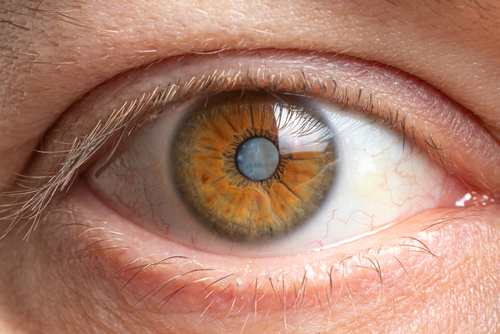How Long Do Cataracts Take to Form?
Cataracts, the clouding of the eye’s natural lens, are a natural part of aging. They develop slowly, and it can take years for you to notice symptoms.
In their early stages, you may not even realize you have them since they may not significantly affect your vision. Keep reading to learn about cataracts, how long they take to develop, and why cataract surgery is necessary after a certain point!
How Cataracts Form
In a healthy and normal eye, the lens is colorless and transparent. It’s shaped like an M&M candy and is found behind the iris, the colored part of the eye.
The normal lens is flexible, allowing the eye to focus on objects both near and far. Starting in their early forties, adults experience changes in their vision due to changes in the eye’s lens.
The proteins found inside the lens begin to break down and clump together. This causes cloudiness, and the transparent lens becomes like an opaque window and lets in less light than a clear window.
This cloudiness is what affects your sight. The cloudy lens is called a cataract.
It causes blurry vision, makes it harder to see at night, and makes the world looks dimmer. Since everyone’s eyes are different, cataracts can develop at different rates in different eyes.
Symptoms of Cataract
If this describes some of the changes you’re noticing in your vision, it could be the beginning of cataracts:
- Blurry, hazy, cloudy vision
- Faded or reduced colors or vision that has a yellowish tint
- Sensitivity to light, either in bright daylight or while driving at night
- Double vision or ghost images
- Difficulty reading unless you’re sitting under bright light
Situations that Increase Cataract Risk
While aging is the most significant factor in developing cataracts, these situations add to cataract risk:
- Diabetes or other medical conditions
- Corticosteroids or certain other drugs
- A family history of cataracts
- Eye injury, surgery, or upper-body radiation therapy
- Overexposure to sunlight and UV rays
- Overconsumption of alcohol
- Smoking
When to Have Cataract Surgery
If you’re finding it harder to do the things you love to do, like knitting, crocheting, sewing, reading, drawing, and writing, or if your daily tasks are more difficult because you can’t see as well, that’s an indication that you should be evaluated for cataract surgery.
Cataract surgery will replace your cloudy lens with an IOL, also known as an intraocular lens, which will restore your clear, bright vision and even improve it. It’s a quick procedure taking no more than half an hour, and afterward, you’ll wonder why you had any doubts or worries.
Cataract surgery also allows you to correct vision problems such as nearsightedness or farsightedness. You can choose a single-distance lens to correct for either condition or a multifocal lens so you can see clearly at a distance and mid-range.
Other types of lenses can also provide you with functional close-up vision. You can discuss your expectations with your eye doctors at Mid Ohio Eye to determine what kind of IOL is right for you.
Do you want to learn more about cataracts, or are you experiencing symptoms of cataracts? Schedule a cataract evaluation at Mid Ohio Eye in Columbus, OH, today!










